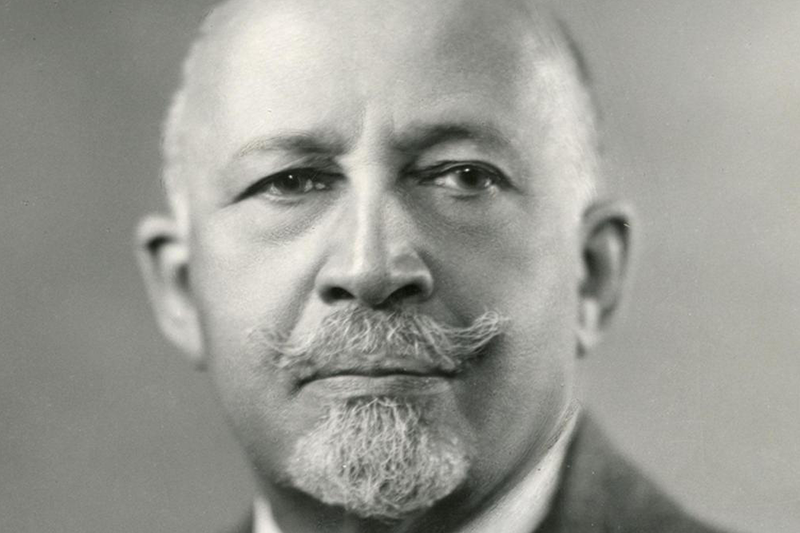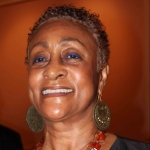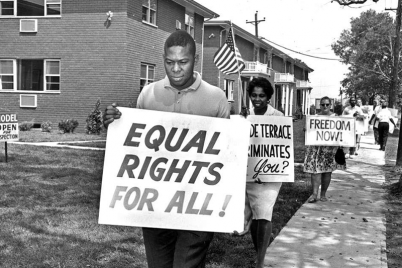“The problem of the twentieth century is the problem of the color line, the relation of the darker to the lighter races of men in Asia and Africa, in America and the islands of the sea,” wrote W.E.B. Du Bois.
By Attorney Jacqueline Hubbard, President, ASALH
W.E.B. Du Bois and many other historians and sociologists agree that slavery was the real cause of the Civil War. When slavery ended, and the Confederacy later lost the war after an influx of black troops, there was intense hatred and violence inflicted upon the newly freed, formerly enslaved black people.
It was particularly harsh in the Southern part of the United States. The violence is still here, so is the animosity, which never ended. In July 1900, in an address entitled “To the Nations of the World,” Du Bois made one of his most famous statements at the Pan-African Congress in London:
“The problem of the twentieth century is the problem of the color line, the relation of the darker to the lighter races of men in Asia and Africa, in America and the islands of the sea.”
How correct he was, and how right he still is. In this post-Obama era, a supernova of racism, anger and frustration has been released on the nation.
In 1900, America was still confronting the collapse of the Confederacy and the horror of the Civil War. There was the near disunion of the country over the issue of slavery, the end of Reconstruction by 1880, and the emergence of the era of Jim Crow, racial terror lynchings, and rigid draconian racial segregation that did not begin to end for another 65 years or more.
A lot has happened since Du Bois wrote those memorable lines, but things haven’t entirely changed. The problem of the 21st century is still the problem of the color line.
Anna Holmes recently wrote an editorial on the allegedly recent phenomenon of the success of mixed-race children, as opposed to children of the same race. First, this is simply not true.
Mixed-race children have been in existence in America since the arrival of the first Europeans and the first Africans. In fact, most African Americans are mixed-race, as are many allegedly white Americans.
People are successful or not based upon education, wealth, opportunities, background, gifts, talents, imagination, intellect and support. Consideration of race and color has little to do with achievement that is positive.
In fact, a good education, open opportunities, wealth, place of background, extenuation of gifts, talents, imagination and intellect are most often hindered by the color of a person’s skin. In spite of the numerous scientific studies that support Du Bois’ position on the concept of race, i.e., that it is a false concept, many refuse to acknowledge it.
Du Bois recognized race as a false concept since we are all members of the same species: the human race. Yet, color was, and is, still a problem in America. This false concept affects all of us who reside here.
The long life of slavery and the defeat of the Confederacy ended with a bitter time that created a bitter harvest of hatred for the victorious North and the formerly enslaved. Reconstruction was endlessly railed against.
By the end of the first year after the war, most Southern states enacted Black Codes that codified brutal attempts to put the recently emancipated black people as close to enslavement as possible.
Any excuse to arrest was used, such as vagrancy laws. Separation of the races began in earnest.
Later the Freedmen’s Bureau was abolished, and Union troops, who had been sent south to ensure the safety of the formerly enslaved, were removed. According to Du Bois in “Black Reconstruction in America,” Reconstruction ended by 1880 and fiercely enforced racial segregation took its place, often by racial terror lynchings and baseless incarceration, especially in the South.
Take, for instance, the mass incarceration of black Americans that began in earnest in the 1990s. According to the American Civil Liberties Union (ACLU), the United States has nearly 25 percent of the world’s prison population.
Since 1970, according to the ACLU, the incarcerated population has increased by 700 percent, with 2.3 million people in jail or prison presently. This number far outpaces population growth and crime. The ACLU predicts one out of every three black boys can expect to go to prison in their lifetime.
These are intolerable statistics and constitute a continuation of black bondage in America. Such a prediction by the ACLU, made in all seriousness, is an indication of how much further black Americans have to go to achieve racial and economic equality.
The Emancipation Proclamation was only the beginning. Since the Civil War ended in African Americans have fought one battle after another to maintain some semblance of freedom and equality and continue to do so.
Attorney Jacqueline Hubbard graduated from the Boston University Law School. She is currently the president of the St. Petersburg Branch of the Association for the Study of African American Life and History, Inc.












